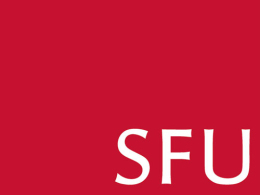
Simon Fraser University
Commonly referred to as SFU, Simon Fraser University was established in 1965 after a North West Company fur trader and explorer, Simon Fraser. This Canadian public research university is located in British Columbia, with its 1.7 kmsquared (0.66 sq mi) main campus situated in Burnaby Mountain in Burnaby while its satellite campuses are found in Vancouver and Surrey.
Seven years before the University was established, Dr. J.B. MacDonald’s Higher Education in British Columbia and a Plan for the Future recommended the establishment of a new university in the Lower Mainland. Three years later, the British Columbia Legislature finally gave their formal consent for the creation of the university in Burnaby.
Several sites were offered for the establishment of SFU; however, Dr. Gordon M. Shrum’s (its first chancellor) recommendation to the provincial government was selected. The site was 365 meters above sea level, at the summit of Burnaby Mountain. In the spring of 1964, Architects Arthur Erickson and Geoffrey Massey began the construction of the university. On September 9, 1965, the school opened to the public and 2,500 students enrolled at SFU.
There are currently eight faculties at SFU: the Faculty of Applied Science, the Faculty of Arts and Social Sciences, the Faculty of Communication, Art and Technology, the Faculty of Education, the Faculty of Environment, the Faculty of Health sciences and the Faculty of Science, and SFU also includes the Beedie School of Business.
Named after a famous explorer who was also known for his pioneering spirit, the university continues to explore new frontiers; the world of robotics.
The university’s Laboratory for Robotic Vision (LRV) School of Engineering Science is proof of how serious the university is in its quest for better robotic technology. In June 2007, the computational vision research laboratory was established, which aimed to develop methodologies, tools and technologies for the design and execution of 2D and 3D vision in combination with other elements of AI.
Here, the main emphasizes of the university is focused on the partnership with researchers and practitioners from the school and industry. Among its notable projects includes the gecko-like climbing robot. This robot, as the name suggests, has the ability to scale walls using its sticky toes developed by the researchers at LRV. It moves slowly, like a tank, but can stick like a gecko on walls.
Most recently, a team of students called the Team GUARDIAN from the university’s Mechatronics System Engineering competed at the Association for Unmanned Vehicle System International (AUVSI). The team has a pair robotic aircraft intended for logistical use, like monitoring forest fires where it is deemed dangerous for humans.
The team was founded in 2010. Two of its members have already graduated and hope that eventually this lab can lead the research in the field of robotics, imaging for medical and aerial, autonomous navigations, and artificial visions.